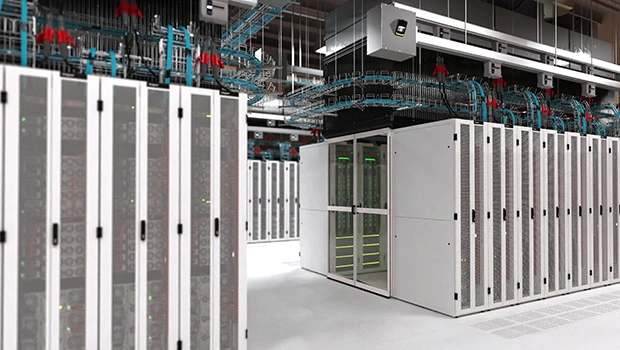Best Practices for Data Center Rack Resiliency in AI Environments
Rack Power
July 31, 2025
- Categories:

As data centers deploy high-density servers and equipment to support power-hungry artificial intelligence (AI) workloads, they must ensure that racks are resilient, and operators can manage them safely.
AI is driving significant changes. Consider server capacity: Several years ago, servers drew about 100 watts of power at peak performance. However, those designed for AI workloads already consume 400 watts, and soon, they will approach 1,000 watts. Even a small row of servers powering AI infrastructure can reach nearly 1 gigawatt in consumption.
Such power requirements have implications for rack resiliency and safety. Prabhakar Muthuswamy, Manager of Product Management for Legrand’s Power, Access, and Control teams, discussed this in a recent interview with Data Center Knowledge. The conversation covered various topics related to achieving rack resilience through remote monitoring, proper heat dissipation, and access control, as well as operator safety.
Improving Data Center Rack Resiliency
Monitoring and Data Capture
Intelligent Rack PDUs and sensors capture and transmit power and environmental data that technicians can analyze remotely or on-site, enabling them to troubleshoot or take preventive action. Intelligent PDUs feature metering and monitoring capabilities that identify potential issues, such as outlets drawing excessive power, which may trigger a breaker trip. To support high-density AI servers, intelligent PDUs can now capture advanced power quality metrics, including harmonic distortion, and offer trip forensics, providing users with a comprehensive and historical view of the rack to ensure proper operation.
Access Control
Remote capabilities also enhance access control. Edge data centers are often unstaffed, requiring protection through cabinet door access and control solutions along with video surveillance. Even when technicians aren't physically present at the facilities, they still need access to a live view of operations and performance metrics. Thus, everything in the data center should be monitored, from servers to racks to busways to the climate conditions inside the facility. Monitoring capabilities, data capture, and analysis are essential for preventing costly downtime.
Heat Dissipation
For high-density and AI servers, traditional air cooling is no longer sufficient. As liquid cooling becomes increasingly prevalent, operators must acknowledge the rising importance of remote environmental monitoring, including the early detection of potential leaks.
Sensors can monitor temperature, humidity, and airflow in racks and cabinets, alerting technicians to issues such as excessively high temperatures or water leaks from cooling units. Although liquid cooling systems are designed to prevent leaks, if one occurs or is imminent, sensors that issue alerts can avert costly damage.
Addressing Operator Safety
Remote Activators
In addition to rack resilience, data centers must also address operator safety. In many data centers, safety protocols dictate powering down the busway before connecting additional equipment. New remote activators enable the addition of circuits to the energized busway from outside the arc flash boundary. Traditionally, technicians have worn PPE when powering up equipment, but now they can use remote activators that allow them to maintain a safe distance from where an arc may occur.
Rigorous Cabinet Testing
An important aspect of rack resilience and safety is the sturdiness of racks and cabinets. The average fully loaded rack now weighs approximately 3,000 pounds, compared to less than half that weight a few years ago. Handling this increased weight requires robust cabinet construction.
Legrand cabinets undergo rigorous tests to ensure their sturdiness, including tilt tests required for UL2416 Certification. Cabinets are tilted at a 10-degree angle and held there for a full minute to ensure they don't tip over. Another functional and rolling test involves rolling fully loaded cabinets over ramps, inclines, and around obstacles to verify their ability to withstand transportation.
How to Improve AI Rack Resiliency
To learn more about AI rack resiliency and safety, check out the Data Center Knowledge FastChat: AI Rack Resiliency & Safety - Ensuring Reliable Power Infrastructure interview, and let us know how we can assist you with your AI data center projects.
Thanks for your submission. One of our Power Strategy Experts will get back to you shortly.